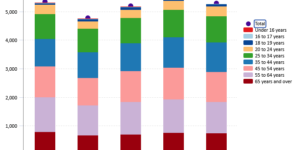Towers Watson has been hit with another roadblock on its long and winding road to reach coverage for $90 million in settlements of two lawsuits related to its merger with broker Willis in 2016.
A Virginia federal district judge in Alexandria has ruled that a “bump-up” exclusion in the directors and officer (D&O) liability policy provided by National Union applies to bar coverage for the settlements of the lawsuits brought by shareholders. The shareholders complained they were shortchanged by what they said was the “inferior” price they got in the $18 billion merger.
Eastern Virginia U.S. District Judge Anthony J. Trenga last week rejected Towers Watson’s argument that the settlements did not fall under the exclusion because they did not represent a bump-up in the merger price as the exclusion requires; rather, Towers Watson maintained, they were payments to settle the liability claims.
The judge ruled that the focus should be on the overall result. He found that “at the end of the day, the former Towers Watson shareholders were paid additional monies because the amount they received in the merger was inadequate” and the shareholders’ allegations were “solely predicated on the theory that shareholders got less in the merger than Towers Watson was worth.”
The ruling comes after a May 2023 ruling by the Fourth Circuit Court of Appeals rejected another argument by Towers Watson in its bid for coverage.
Towers Watson shareholders filed lawsuits in Virginia and Delaware against Towers Watson’s chairman and CEO John Haley and others, alleging that they received below-market consideration for their shares in the merger. They alleged that Haley negotiated the merger agreement under an undisclosed conflict of interest: Haley would receive $165 million if the deal closed. The shareholders maintained that because of this alleged conflict, Haley purportedly agreed to a below-market valuation of Towers Watson shares to ensure the merger’s success.
The Virginia litigation settled for $75 million; the Delaware settled for $15 million. Towers Watson sought indemnity coverage for the settlements under its D&O policies including the primary policy from National Union Fire Insurance. The insurers refused the indemnity request, citing the bump-up exclusion in the policies. Towers Watson argued that the exclusion did not apply.
Towers Watson prevailed on one of its arguments in a 2021 federal district ruling when the same judge, Judge Trenga, found that the bump-up exclusion did not apply to bar coverage because the deal between Willis and Towers Watson was not a typical acquisition where one entity gains control over another. Trenga referred to the fact that Towers Watson cancelled its common stock and issued new shares to Willis when it merged into a Willis subsidiary and disappeared.
But in a 3-0 opinion written by Judge G. Steven Agee, the Fourth Circuit Court of Appeals rejected the district court’s reasoning and vacated Trenga’s decision. The appeals court criticized the lower court’s reading of the exclusion and characterization of the merger as “unduly narrow” and faulted the district court for finding “ambiguity where none exists and ascribing specialized meanings to policy terms that the parties did not reasonably intend.”
Judge Agee noted that neither the bump-up exclusion nor the policy stipulates, or even hints, that the term “acquisition” was intended to refer only to a particular form of acquisition, such as a takeover.
The Fourth Circuit concluded that the merger was unambiguously within the scope of the bump-up exclusion, vacated the district court’s order, and remanded the case for further consideration of Towers Watson’s remaining arguments: whether for the purposes of the exclusion Towers Watson is “an entity” under the policies and whether the settlements “represent the amount by which … consideration is effectively increased.”
The Fourth Circuit denied Towers Watson a rehearing and Towers Watson dropped the argument over whether it was an entity as anticipated under the policies. That left Judge Trenga and the district court to consider whether the underlying $90 million settlements represent an effective increase in consideration for the original Towers Watson shares and thus fall under the exclusion.
National Union argued that the consideration paid in the merger to shareholders was inadequate and the $90 million settlements increased the total payments to former Towers Watson shareholders because of the merger.
Towers Watson argued that the exclusion did not apply because the $90 million represented amounts to settle the shareholder liability claims and did not represent an increase in the final merger price. Towers Watson denied that the settlements represent an increase in consideration as a material condition of the settlement and said shareholders were never told that it was.
Judge Trenga last week rejected that Towers Watson argument and sided with the insurer, ruling that the exclusion applies to bar coverage because the $90 million does relate to the final merger price. The judge said the issue is whether the settlements “represent the amount by which such price or consideration is effectively increased.” He found that the amounts paid by way of the settlements “clearly related to the amount of consideration the shareholders received in connection with the merger and were paid because of the merger.”
The question, however, he continued, is whether the settlements in effect represent such consideration for the merger. The court concluded that the settlements did just that.
While it is true that the settlements were not amounts paid “for” the merger in the same way that the special dividend and the Willis shares received by Towers Watson shareholders were paid as merger consideration, the exclusion does not only apply to those amounts specifically identified as the consideration paid for a merger or its completion, the opinion says. Rather, the exclusion reaches any amounts “representing” that which “effectively increases” the consideration paid for the merger.
“The focus is therefore on the overall result—whether, at the end of the day, the former Towers Watson shareholders were paid additional monies because the amount they received in the merger was inadequate. That is the case here, where the actions’ allegations of harm were solely predicated on the theory that shareholders got less in the merger than Towers Watson was worth.
Moreover, the court added, the policy contemplates that the exclusion could apply to amounts distributed after the merger consideration has already been paid. Accordingly, the “real result” of the subsequent settlements was that the shareholders received increased consideration for the merger, which places the settlements squarely within the exclusion’s carve-out from covered loss.
Willis and Towers Watson completed their merger on January 4, 2016, and shares of Willis and Towers Watson ceased trading at the close of the New York Stock Exchange and NASDAQ Stock Market, respectively, that day. Shares of Willis Towers Watson now trade on the NASDAQ under the symbol WLTW.
This article was originally published on Insurance Journal. Reporter Andrew Simpson is the East Coast Editor of Insurance Journal.





















 New Regulations Ramping Up Association Costs Frustrate Florida Condo Owners
New Regulations Ramping Up Association Costs Frustrate Florida Condo Owners  The War on Wildfires Is Going High-Tech
The War on Wildfires Is Going High-Tech  Property and Casualty Insurance Trends for 2025
Property and Casualty Insurance Trends for 2025  Study: Widening Gap Between Cyber Attack Causes, Public Perception
Study: Widening Gap Between Cyber Attack Causes, Public Perception 





